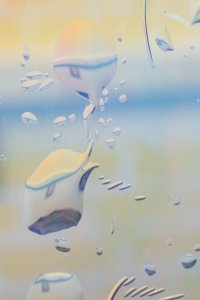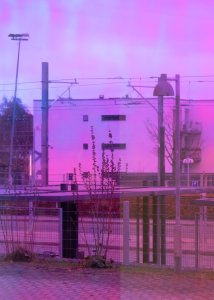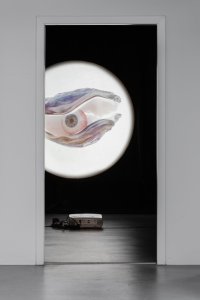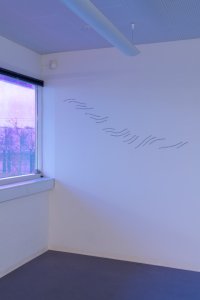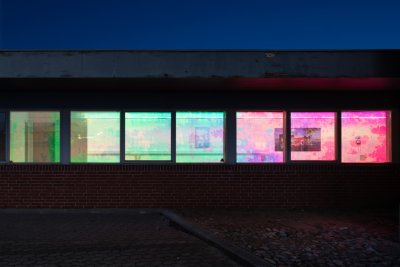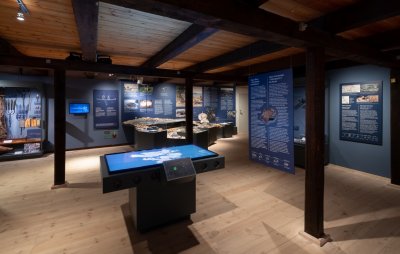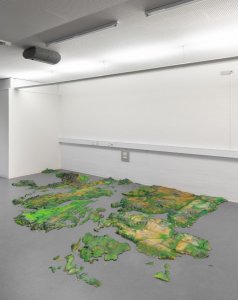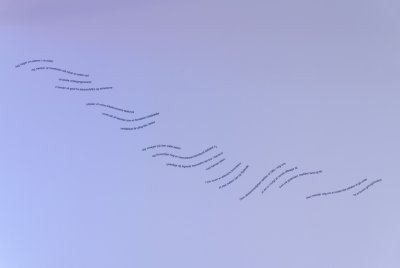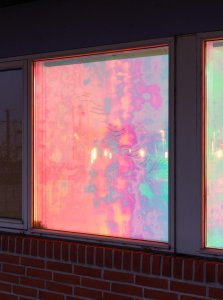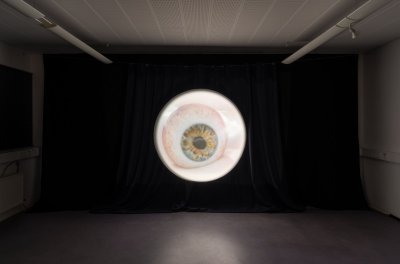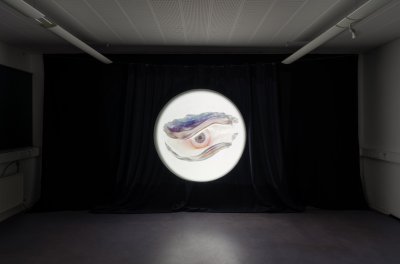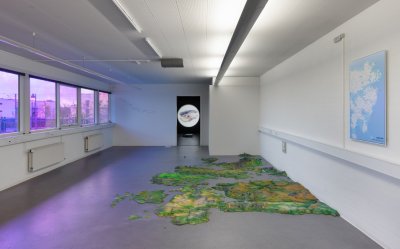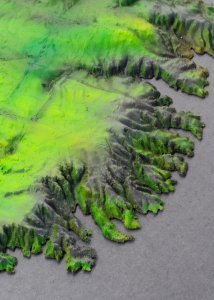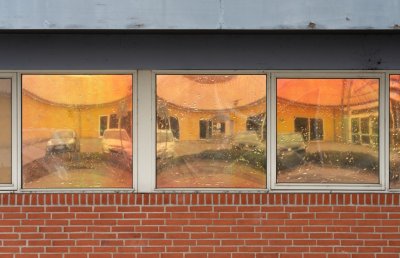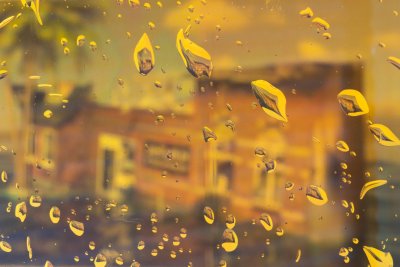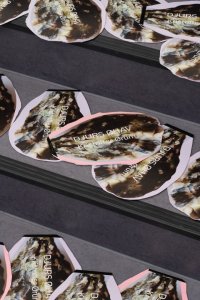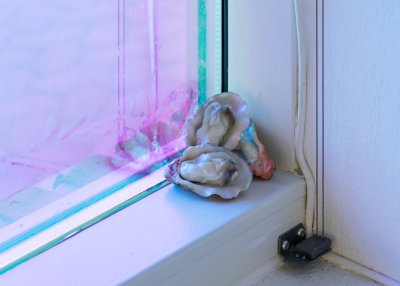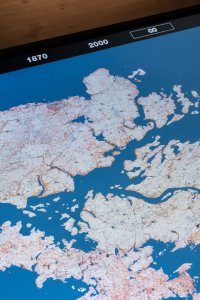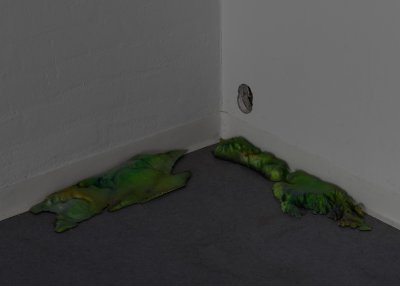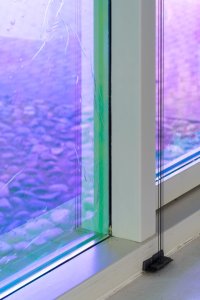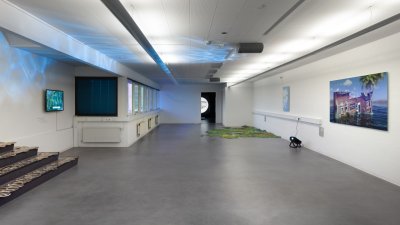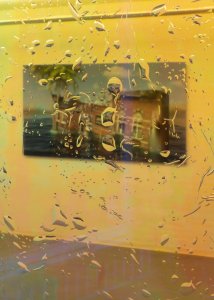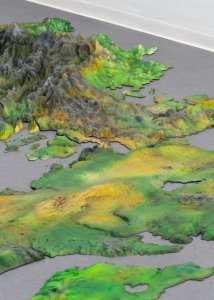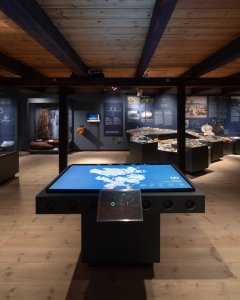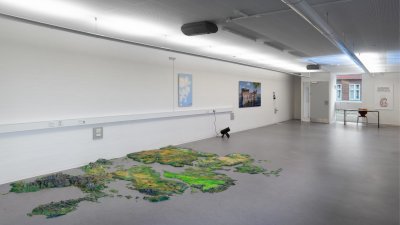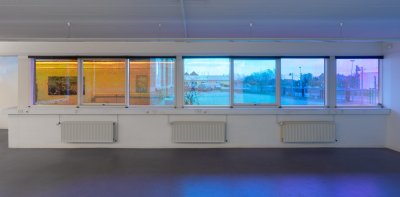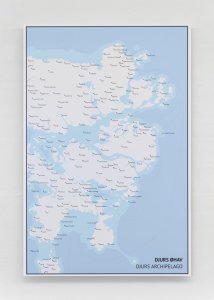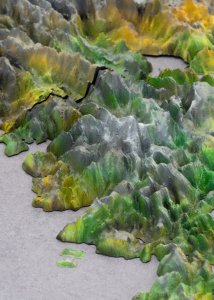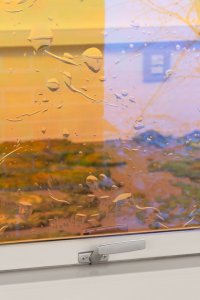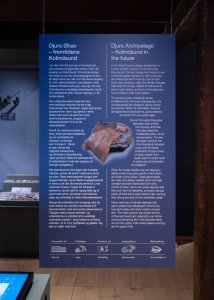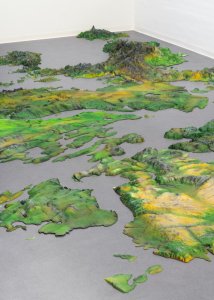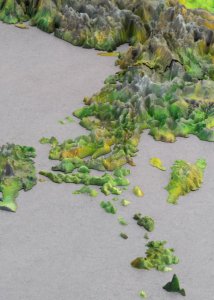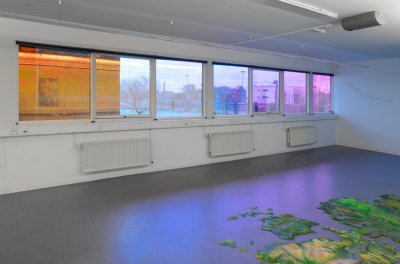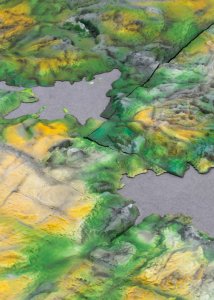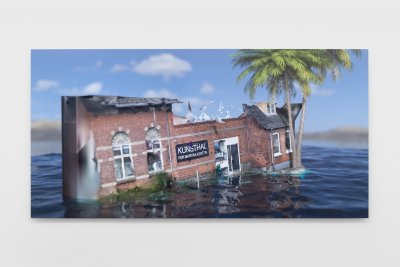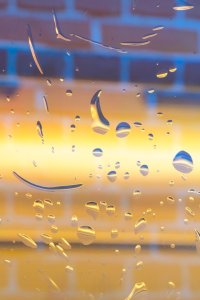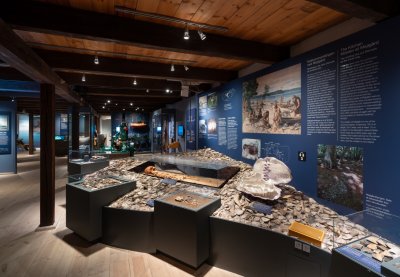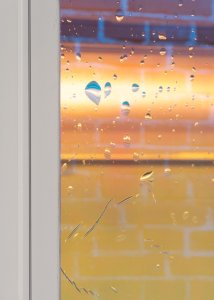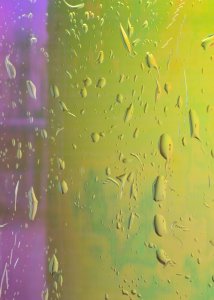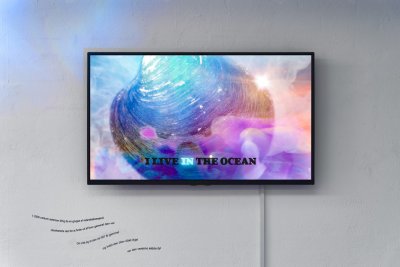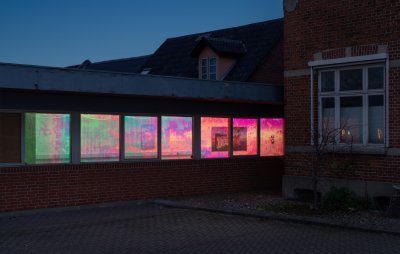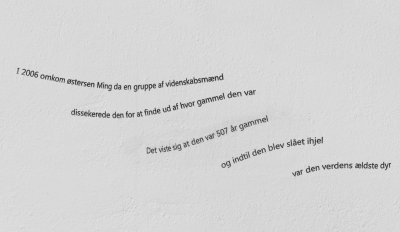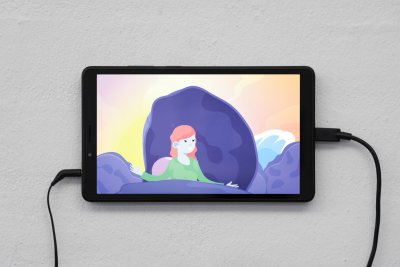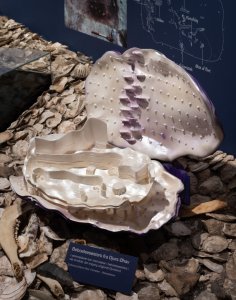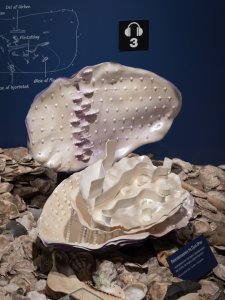Project Details
The solo exhibition Djurs Øhav addressed climate change and ecological narratives concerning Kolindsund, a formerly drained lake on Djursland. The project was based on historical facts and scientific data. The exhibition at Kunsthal for Maritim Æstetik included a large 3D-printed map depicting Djursland as a flooded archipelago and smaller objects like a 3D-printed oyster with eyes. At the neighbouring Museum Østjylland, speculative objects were integrated into the historical displays, including a model of an "oyster home" and interventions within exhibits about Grenå's local oyster history.
Several video works were part of the exhibition. One was an animated video about life inside an oyster. Another, the film The City that No Longer Exists (2020), was shown as a projection of a purple oyster narrating a story where humans transform into oyster-like beings after their city on a drained lake is flooded. A third video, A Song for Ming, was a karaoke track by Kristoffer Ærørum with music and performance by Josefine Struckmann. Its on-screen lyrics tell the factual story of a 507-year-old clam killed during the scientific process of determining its age.
The project's visual materials referenced aesthetics from Djurs Sommerland and airplane safety folders. A book, "Kolindsund fremtidsturistguide," was published by forlaget majlund in 2022 (ISBN 9788793882096) in connection with the work. The exhibition was part of a series of events organised by Kunsthal for Maritim Æstetik, which also included publications, debates, food events, and bus tours. The project was mentioned in reviews for its role in public debates on landscape restoration and climate adaptation.
